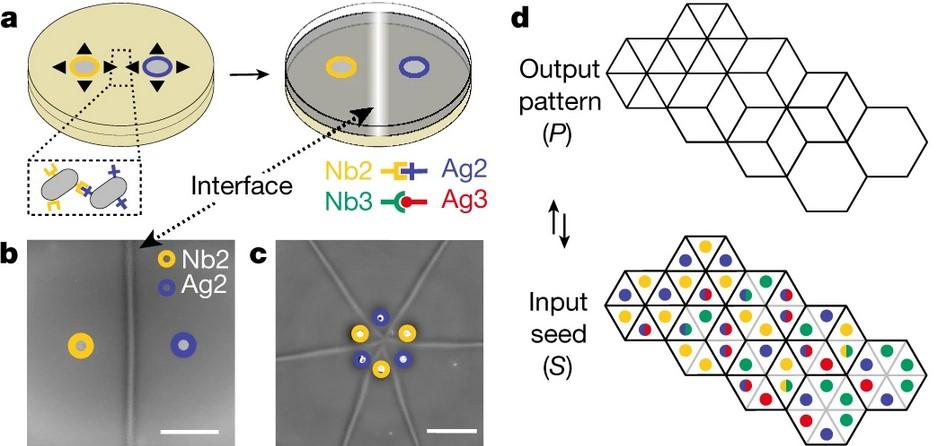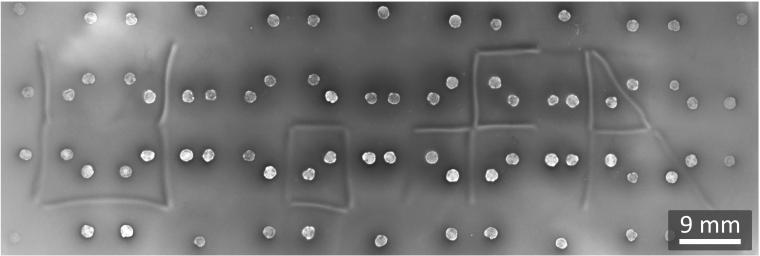Kim, H., Skinner, D. J., Glass, D. S., Hamby, A. E., Stuart, B. A., Dunkel, J., & Riedel-Kruse, I. H.
Nature.
Dr. Riedel-Kruse with Honesty Kim (former UA postdoctoral fellow) and colleagues published a paper in Nature that explores how natural tiling patterns, such as on a fly’s wing, can be formed through mechanical interactions. By using bacteria that were modified to stick together selectively, the team found that just four different adhesive types are sufficient to make any tiling pattern. The findings are important to exploring how multicellular life might have evolved on Earth. The work also has implications for how to form new biomaterials, such as packing materials that can degrade more quickly than plastic. They were able to manipulate how bacteria grew and stuck together to write out "U of A" for the University of Arizona.
Link to paper: https://www.nature.com/articles/s41586-022-04944-2
Link to UA News article: https://news.arizona.edu/story/more-meets-eye-how-patterns-nature-arise







